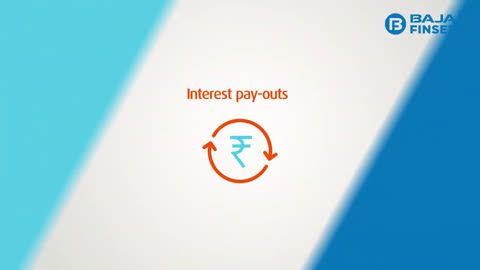Form 60 is a declaration form mandated by Rule 114B of the Income-tax Rules, 1962, for individuals or entities in India who do not possess a Permanent Account Number (PAN). It enables them to undertake specific financial transactions where quoting a PAN is obligatory, such as opening bank accounts or purchasing high-value assets, thereby ensuring adherence to tax regulations.
What is a Form 60?
Form 60 is a self-declaration document that individuals or entities in India must submit if they do not have a Permanent Account Number (PAN) but need to conduct financial transactions where quoting a PAN is mandatory. It ensures compliance with tax regulations while allowing individuals without a PAN to carry out specific financial activities, such as opening a bank account or purchasing high-value assets.
When is Form 60 required?
Nature of transaction |
Value threshold |
Reporting entity |
Sale or purchase of motor vehicles |
All transactions |
Inspector General (IG) or Sub-Registrar appointed under the Registration Act |
Opening an account other than a time deposit with a bank or cooperative bank |
All transactions |
Banking company or cooperative bank |
Applying for a credit or debit card from a bank or cooperative bank |
All transactions |
Any institution issuing credit or debit cards |
Opening a DEMAT account |
All transactions |
Depository, participant, or custodian of securities registered with SEBI |
Payments made to hotels or restaurants against a single bill |
Cash payments exceeding Rs. 50,000 |
Banking company or cooperative bank |
Payments for foreign travel or purchase of foreign currency |
Cash payments exceeding Rs. 50,000 |
Authorized dealer, money changer, or offshore banking unit |
Purchase of mutual fund units |
Amount exceeding Rs. 50,000 |
Trustee of a mutual fund |
Acquisition of debentures or bonds issued by a company or institution |
Amount exceeding Rs. 50,000 |
Company issuing debentures or bonds |
Acquisition of bonds issued by the Reserve Bank of India (RBI) |
Amount exceeding Rs. 50,000 |
Reserve Bank of India |
Cash deposits made with a bank, cooperative bank, or post office on any single day |
Amount exceeding Rs. 50,000 |
Banking company, cooperative bank, or Post Master General |
Purchase of bank drafts, pay orders, or banker’s cheques |
Cash payments exceeding Rs. 50,000 |
Banking company or cooperative bank |
Time deposits with banks, cooperative banks, post offices, Nidhi companies, or NBFCs |
Amount exceeding Rs. 50,000 or total deposits exceeding Rs. 5,00,000 in a financial year |
Banking company, cooperative bank, post office, Nidhi company, or NBFC |
Payments for pre-paid payment instruments such as mobile wallets |
Cash payments or pay orders, bank drafts, or banker’s cheques aggregating to more than Rs. 50,000 in a financial year |
Banking company or cooperative bank |
Life insurance premium payments |
Amount aggregating to more than Rs. 50,000 in a financial year |
Insurance companies registered under IRDA |
Contract for the sale or purchase of securities other than shares |
Amount exceeding Rs. 1,00,000 per transaction |
Company issuing securities |
Sale or purchase of shares of an unlisted company |
Amount exceeding Rs. 1,00,000 per transaction |
Company issuing shares |
Sale or purchase of immovable property |
Amount exceeding Rs. 10,00,000 or stamp duty valuation exceeding Rs. 10,00,000 |
IG or Sub-Registrar appointed under the Registration Act |
Sale or purchase of goods or services other than those mentioned above |
Amount exceeding Rs. 2,00,000 per transaction |
Any individual or entity subject to audit under Section 44AB |
How can I download the Form 60 PDF online?
To download the Form 60 PDF online, follow these steps:
Step 1: Visit the Official Website – Go to the Income Tax Department’s website.
Step 2: Go to the Forms Section – Click on the ‘Forms/Downloads’ tab.
Step 3: Select Income Tax Forms – Choose ‘Income Tax Forms’ from the dropdown menu.
Step 4: Search for Form 60 – Type "Form 60" in the search bar and press enter.
Step 5: Locate Form 60 – Find the link to Form 60 in the search results.
Step 6: Download the PDF – Click on the download link to save the Form 60 PDF to your device.
Step 7: Save the File – Store it in an easily accessible location for printing or digital filling.
By following these steps, you can quickly download Form 60 for submission.
What are the information required to fill the Form 60AN
Here are the 20 things that must be filled in Form 60:
1. Personal Information:
- First Name, Middle Name, and Surname
- Date of Birth (DD/MM/YYYY)
- Father's First Name, Middle Name, and Surname
2. Address:
- Flat/Room No., Floor No.
- Name of Premises, Block Name/No.
- Road/Street/Lane, Area/Locality
- Town/City, District, State, Pincode
3. Contact Information:
- Telephone Number
- Mobile Number
4. Transaction Details:
- Amount of Transaction
- Date of Transaction (DD/MM/YYYY)
- Mode of Transaction
- Names of all Persons Involved (in case of joint transactions)
5. Identification and Tax Information:
- Aadhaar Number (if available)
- Acknowledgment Number and Date of PAN Application (if applied)
- Estimated Total Income for the Financial Year (if PAN not applied)
- Details of Identity Proof Document
- Details of Address Proof Document
Structure of Form 60
Given below are the details that must be filled in Form 60:
- Forename(s) and surname
- Date of birth (DD/MM/YYYY format)
- Father's forename(s) and surname
- Flat/house number
- Floor number
- Name of the apartment/house
- Block name and number
- Street name
- Locality/area
- City/town
- District
- County/state
- Postcode
- Telephone number (including STD code)
- Mobile number
- Transaction amount
- Date of the transaction (DD/MM/YYYY format)
- Number of individuals involved in the transaction
- Mode of payment
- Aadhaar number
- Acknowledgment number (if applicable, DD/MM/YYYY format)
- Agricultural and non-agricultural income for the financial year (if not PAN card holder)
- Details of identity proof document
- Details of address proof document
A declaration must also be signed, with the date included.
How do I submit the Form 60?
To submit Form 60, fill it out with accurate personal and financial details. For example, if you are opening a new bank account and lack a PAN, complete Form 60 and provide it to the bank. Ensure the form is signed and attached with relevant documents like your Aadhaar card or passport. The institution will then process your Form 60, allowing your transaction to proceed without a PAN.
When should you submit the Form 60?
Form 60 should be submitted in various financial and investment scenarios where quoting a Permanent Account Number (PAN) is mandatory, but you do not possess one. Below is a table detailing specific instances:
Scenario |
Description |
Opening a bank account |
When opening a savings, current, or fixed deposit account without a PAN. |
High-value cash deposits |
For cash deposits exceeding Rs. 50,000 in a single day in a bank account. |
Purchasing property |
When buying immovable property valued at Rs. 10 lakh or more without a PAN. |
Buying vehicles |
For purchasing motor vehicles other than two-wheelers without a PAN. |
Applying for loans |
When applying for loans exceeding Rs. 50,000 without a PAN. |
Insurance premiums |
For paying insurance premiums exceeding Rs. 50,000 annually without a PAN. |
Investing in securities |
When investing in securities or mutual funds amounting to Rs. 50,000 or more without a PAN. |
Fixed deposit transactions |
For fixed deposits of Rs. 50,000 or more with banks, post offices, or NBFCs without a PAN. |
Form 60 ensures compliance with tax regulations and helps track significant financial transactions.
Who does not require to submit a Form 60?
Individuals who possess a Permanent Account Number (PAN) are not required to submit Form 60. Additionally, non-residents engaging in specific transactions, such as applying for credit or debit cards or paying restaurant or hotel bills, are exempt from submitting Form 60.
Documents to be submitted with Form 60
- Aadhar card
- Driving license
- Passport
- Ration card
- ID proof from a recognised institution
- Electricity or telephone bill
- Any official document from the Central Government, State Government, or local authorities
- Proof of the address listed on your Form 60
Also, read: PF Form 10E
Documentation for specific entities
Trusts: Submit a copy of your trust deed or the registration certificate issued by the Charity Commissioner.
Association of persons (other than Trusts)/ Body of individuals/ Local authority/ Artificial Juridical Person:
- A copy of your agreement
- Registration certificate (from charity commissioner, registrar of cooperative society, or similar authority)
- Any official document from a Central or State Government department that confirms identity and address.
Consequences of wrong declaration
Making an incorrect declaration in Form 60 can lead to:
- Transactions under Rs. 25 lakh: Potential imprisonment of 3 months to 2 years, plus a fine.
- Transactions over Rs. 25 lakh: Potential imprisonment of 6 months to 7 years, plus a fine.
Also, read: EPF Form 5
Important guidelines for declaration in Form 60 of Income Tax
Accuracy of information
Before signing Form 60, the declarant must ensure that all details provided are accurate, complete, and truthful. Any false declaration may result in prosecution under Section 277 of the Income Tax Act, 1961, with the following penalties:
- For tax evasion exceeding Rs. 25 lakh: Rigorous imprisonment ranging from 6 months to 7 years, along with a fine.
- For other cases: Rigorous imprisonment ranging from 3 months to 2 years, along with a fine.
Conditions for accepting the declaration
A Form 60 declaration should not be accepted under the following conditions:
- If the income mentioned in item 23b exceeds the maximum non-taxable limit unless the applicant has applied for a PAN and has filled in column 22.
- If taxable income is indicated in item 23c(i) for a foreign company.
Ensuring compliance with these guidelines helps in avoiding legal complications and penalties.
Conclusion
Form 60 is important if you need to do things like open a bank account or buy property but do not have a PAN yet. Make sure you understand when to use it and what documents are requires.
Investment calculator |
||




